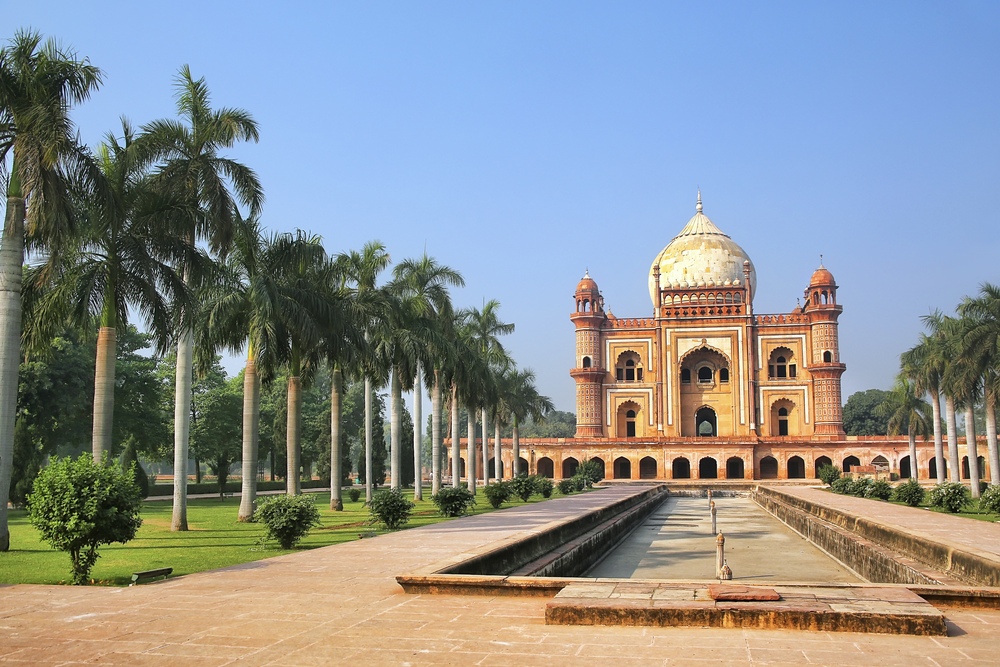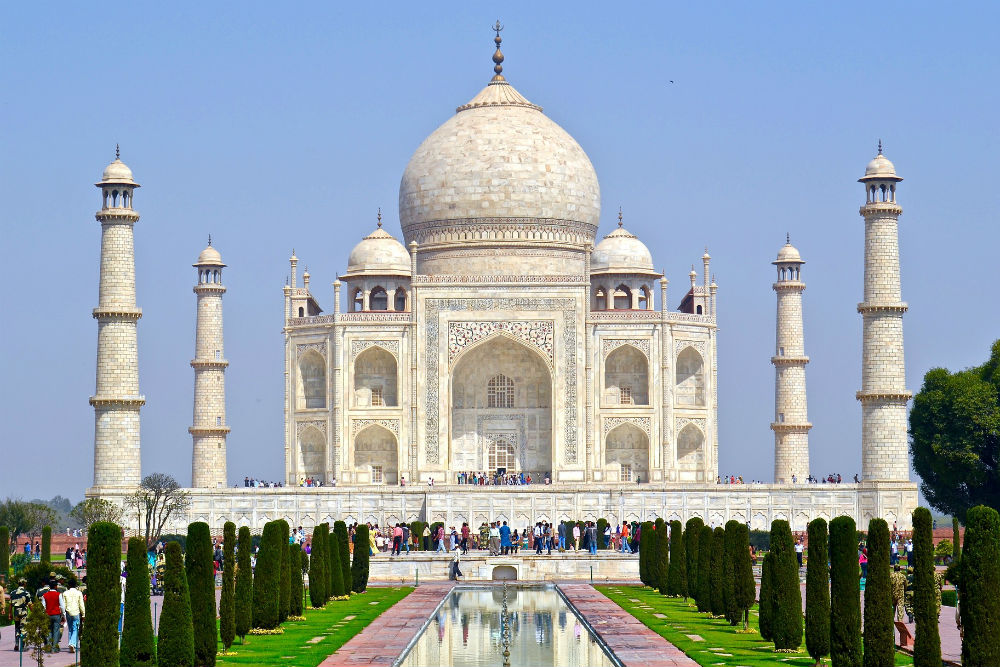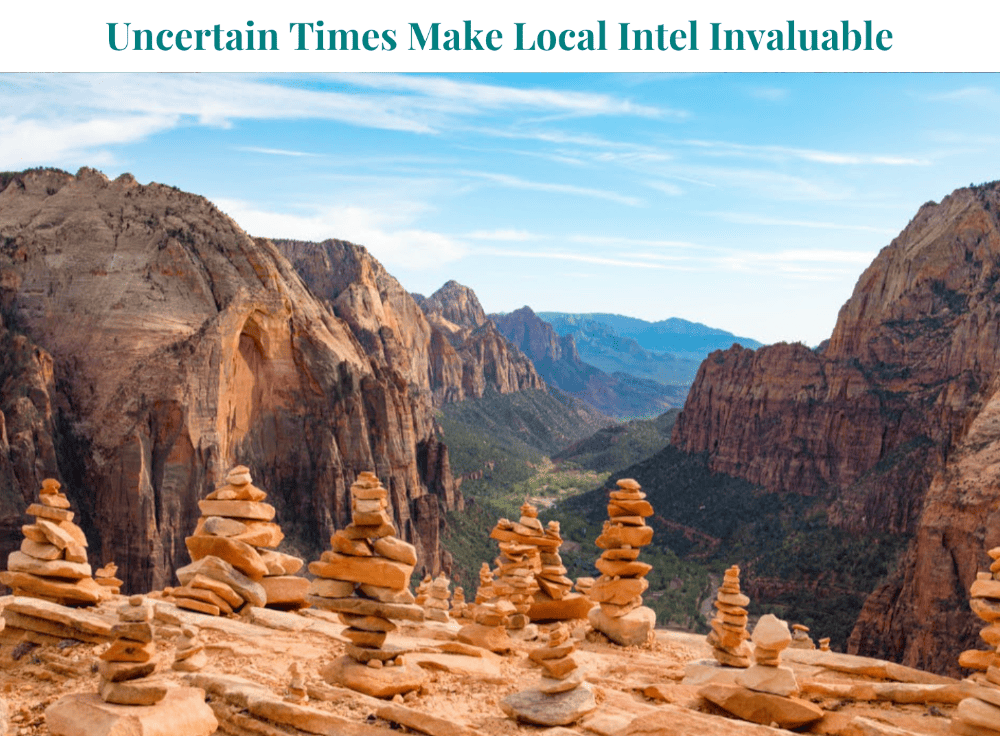Secrets of India: Insider’s Travel Guide
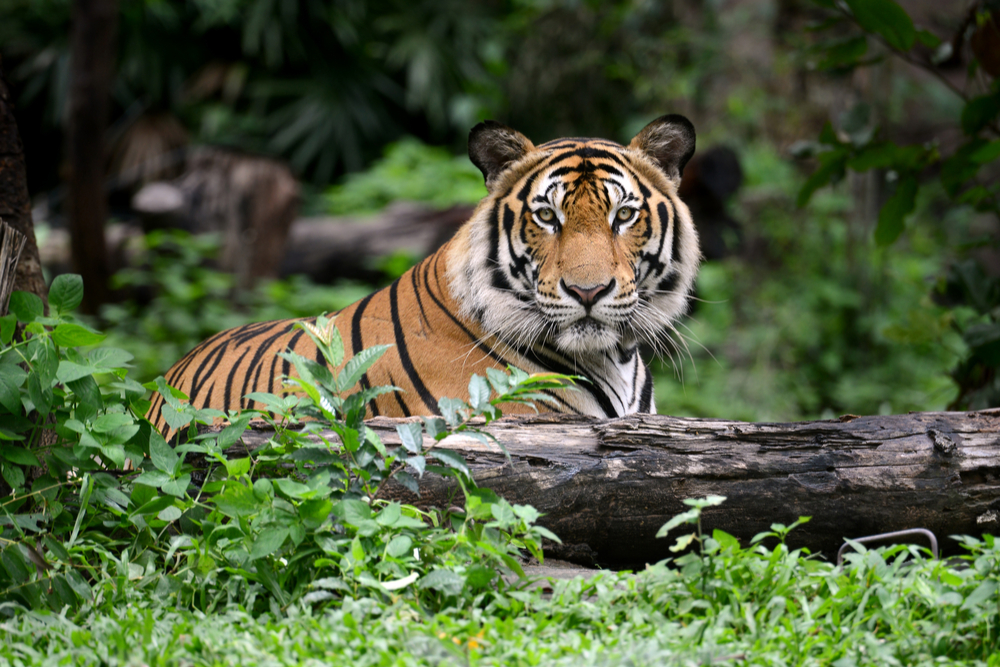 India's national parks offer an incredible diversity of wildlife, including Bengal tigers. Photo: Shutterstock
India's national parks offer an incredible diversity of wildlife, including Bengal tigers. Photo: Shutterstock
The insider advice on this page is from one of Wendy’s Trusted Travel Experts for India: Sanjay Saxena of Nomadic Expeditions
The son of a brigadier general in the Indian Army, Sanjay was born in New Delhi and grew up living in numerous places throughout India. He began mountaineering and rock climbing in the high Himalayas at age 15, and since 1979 has led groups on trekking, climbing, touring, and safari trips not only in India but in Tibet, Mongolia, Sri Lanka, Nepal, and Bhutan. In 1992 he and David Breashears co-led the first western descent of the Brahmaputra River—a 250-mile whitewater rafting trip that was filmed for the BBC series “Classic Adventures”—and in 2001 he led the first Western group to journey overland from Kunming to Lhasa along the “southern road.” Committed to running trips that are ecologically responsible and culturally sensitive, Sanjay has been named an “Unsung Hero of Compassion” and recognized by the Dalai Lama for the community projects he has created in South Asia. Travelers benefit from his rare combination of deep insider knowledge and talent for creating unique, intellectually engaging itineraries to both traditional and remote destinations.
Things to Do and See
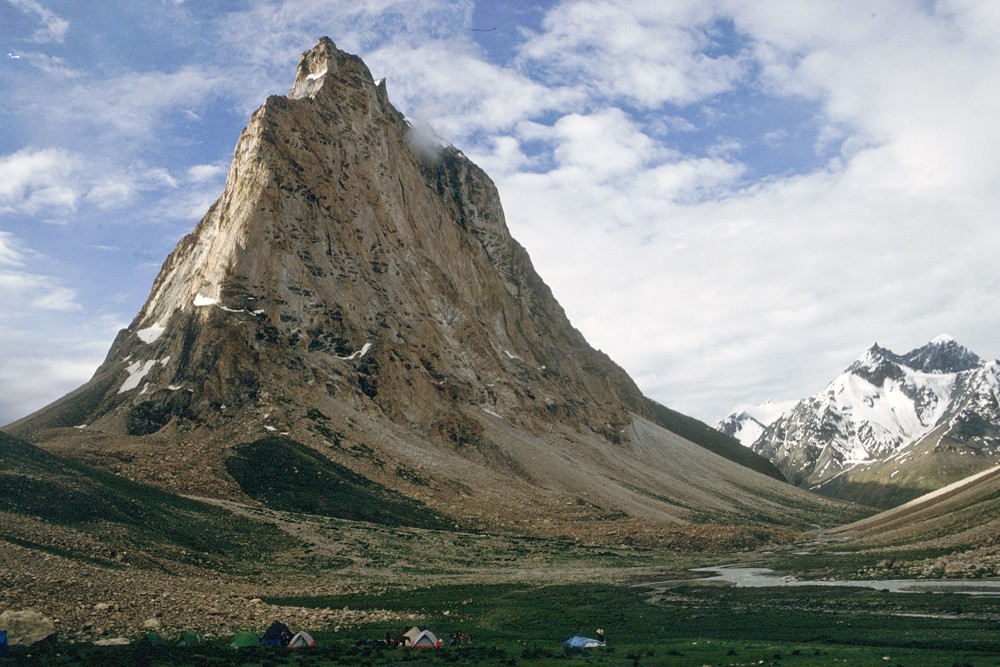
Ladakh, in North India: Now that’s a tent with a view. Photo: Sanjay Saxena
Don’t miss
India today boasts 42 UNESCO World Heritage Sites and 50 more waiting to be included. No matter where you choose to visit, you are certain to be astounded by architectural splendor, rich history, and beautiful landscapes.
India’s national parks are a treasure trove of biodiversity, offering an unforgettable experience for even the most discerning safari-goer. Amidst these stunning landscapes you’ll find the world’s largest wild population of Royal Bengal tigers, the majestic one-horned rhinoceros, Asian elephants, black and brown bears, three types of leopards, buffalo, a wide array of primates, freshwater dolphins, and reptiles. Bird watchers will be thrilled by the 1,200-plus avian species that call these parks home.
Kaziranga National Park, in Assam, is a must-visit to view India’s big game—tiger, elephant, rhino, leopards, and buffalo—up close. Other premier parks such as Kanha, Bandavgarh, Pench, and Tadoba also offer exceptional opportunities for tiger sightings.
For a luxurious stay, consider the Taj hotel group, which has four luxury lodges strategically located in various parks. For those with a more moderate budget, Pugdundee Safaris offers seven lodges across six different parks. Those who prefer to travel by water can voyage through Kaziranga National Park on a Brahmaputra River cruise.
If you are up for adventure in higher elevations and colder weather, winter in Ladakh provides a unique opportunity to spot the elusive snow leopard. Nestled comfortably at the Snow Leopard Lodge, you can embark on daily excursions to track the most elusive of the big cats. Known as the “ghost of the mountains,” the snow leopard is notoriously difficult to spot. Travelers staying at the lodge, however, enjoy an impressive 80% chance of encountering one in the wild.
Hidden gems
Northeast India, the enchanting region east of Bangladesh, remains one of India’s best-kept secrets. With its breathtaking vistas and rich cultural tapestry, this area boasts indigenous tribes, ancient temples, vibrant wildlife parks, pristine rivers, and soaring peaks. Known as the “seven sisters,” these seven states—Arunachal Pradesh, Assam, Manipur, Meghalaya, Mizoram, Nagaland, and Tripura—possess a cultural heritage and history distinct from the rest of India. Unlike much of the country, they were never fully ruled by the powerful kings of Central, Western, or Northern India, making their traditions and lifestyle unique. The British, too, faced significant challenges in their attempt to penetrate this region, which has preserved its distinct identity for centuries.
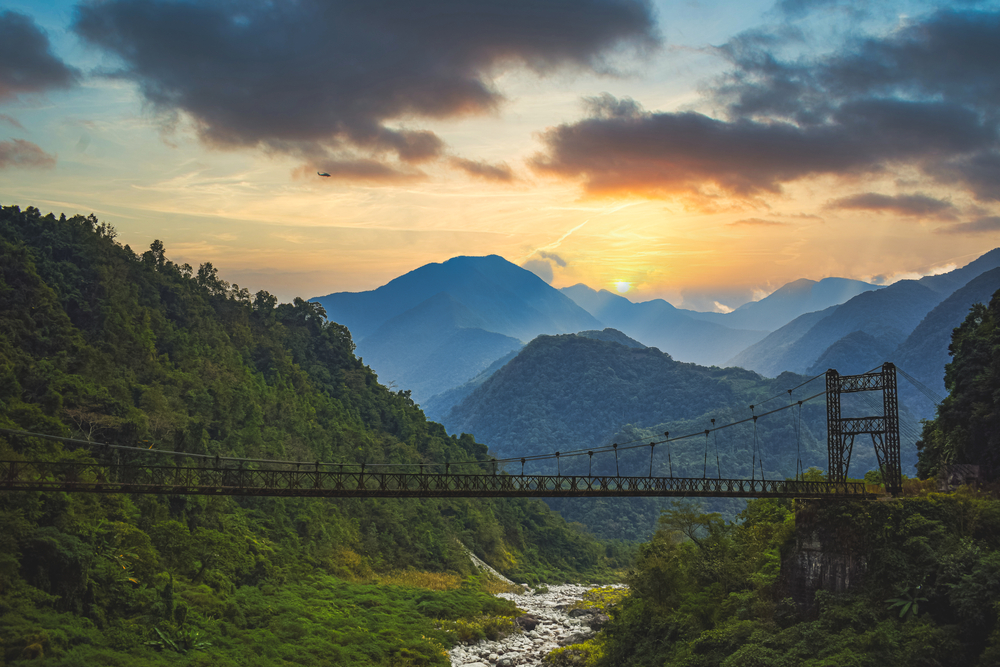
Sunrise in Arunachal Pradesh, a hidden gem in Northeast India. Photo: Shutterstock
Kerala is called the “God’s Own Country,” as it is said to have been carved by the axe of God. This tropical region of coconut palm-lined emerald waterways connecting rivers, canals, lakes, and lagoons is also known as the “Green Venice of the East.” What makes Kerala unique? Ancient temples and dance forms; kalaripayattu, one of the world’s first martial arts; spices grown here that changed the history of the world; tranquil backwaters; and fresh seafood cooked with coconut, to name but a few. Kerala’s harbor city, Kochi, has a rich international history, as it was here that early European explorers first made landfall in India. Kerala has long provided a safe port of call for Christians and Jews seeking dignity and refuge from persecution; that inclusiveness and acceptance is still palpable today. The nearby temples of Tamil Nadu are spectacular, and spectacularly grand. Go to admire their unique style and the intricate stone carvings that adorn them.
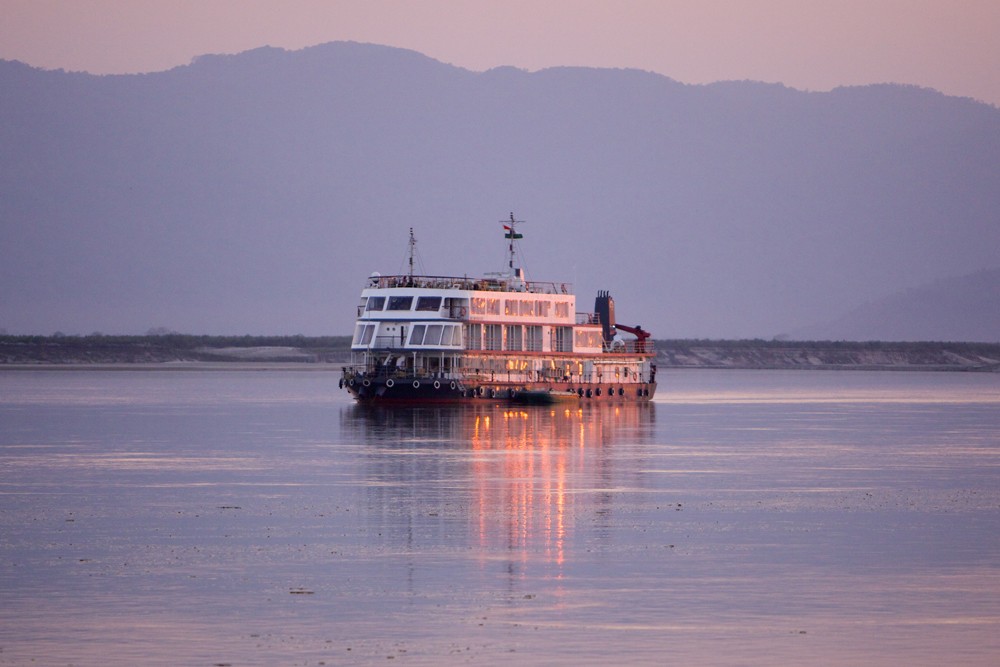
A Brahmaputra River cruise takes you through a part of India that most travelers miss. Photo: Sanjay Saxena
Most underrated places
Varanasi (also known as Benaras or Kashi) is the India of your imagination. This is one of the world’s oldest continually inhabited cities, and one of the holiest pilgrimage sites for Hindus. Varanasi offers a breathtaking experience to every visitor—the sun’s rays at dawn shimmering across the Ganga River, temples and shrines along the banks bathed in a golden hue, soul-stirring chants of hymns and mantras with the fragrance of incense filling the air. When viewed from a boat in the river, the sunset aarti prayer ceremony with chants and large oil lamps is a truly magical sight: The twirling of the lamps’ flames reflecting in the water makes the holy river come alive. Varanasi is also renowned for its rich tapestry of music, arts, crafts, and education.
Hampi, a UNESCO World Heritage Site in Karnataka, captivates visitors with its mesmerizing history and dramatic landscape. Once the thriving capital of the Vijayanagara Empire, the town of Hampi abounds in spectacular ruins, including the magnificent Virupaksha Temple and the iconic stone chariot at Vittala Temple. As you wander, you’ll encounter intricately carved temples and sprawling royal complexes set against a striking backdrop of boulder strewn hills. The Tungabhadra River flows through the heart of Hampi, providing tranquil spots for reflection and leisurely boat rides. The many festivals and exhibitions of traditional music and crafts provide a means by which travelers can engage with this community’s vibrant culture.
Khajuraho, a UNESCO World Heritage Site in Madhya Pradesh, is famous for the intricate stone carvings that adorn its temples. Khajuraho showcases the craftsmanship of the Chandela dynasty, which flourished between the 9th and 11th centuries. The temples, dedicated to deities, are renowned for their erotic and sensual carvings, depicting themes of love and devotion. The most famous among these, the Kandariya Mahadeva Temple, is notable for its towering spire, symbolizing the connection between the earthly and the divine. The town of Khajuraho hosts an annual dance festival in February celebrating classical Indian dance forms such as Kathak and Odissi. The festival brings together artists from across the country to perform nightly against the backdrop of the illuminated temples.
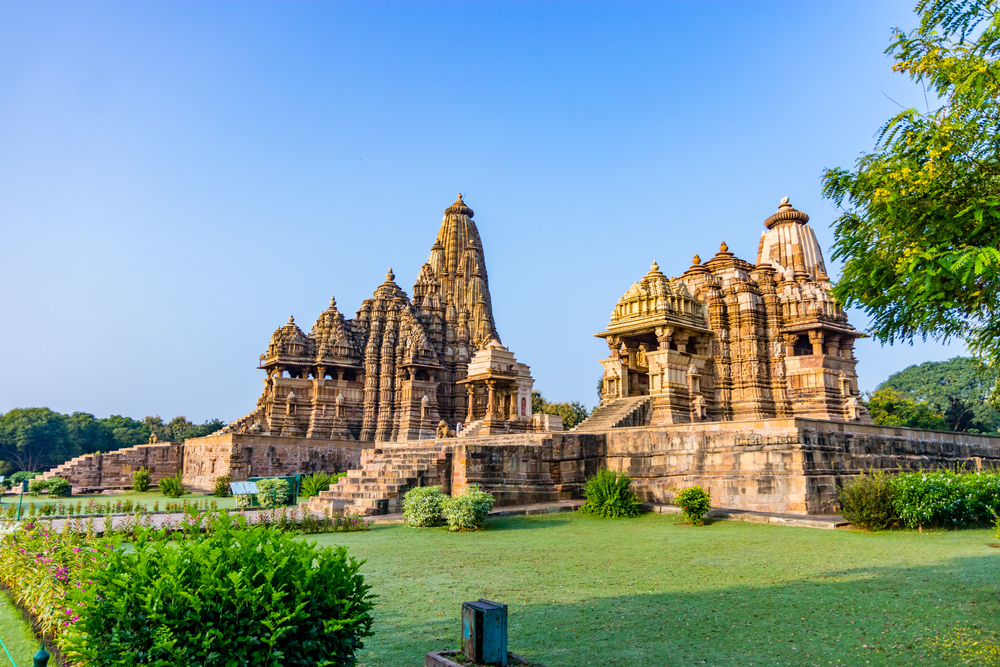
The temples at Khajuraho date back to the 9th century. Photo: Shutterstock
Cheap thrills
Hop into a rickshaw for an exhilarating ride through the narrow and bustling alleyways of Chandni Chowk in Delhi, one of the city’s oldest and most vibrant markets. As your driver expertly navigates the narrow lanes, you’ll feel the rush of the chaotic market. The thrill comes from the near-misses with cows lazily lounging on the road, pedestrians weaving through the crowd, and colorful stalls overflowing with everything from spices to textiles. It’s like being in a high-speed chase—albeit one with monkeys clambering along the power lines. The sounds, smells, and sights will leave you breathless—and craving more!
Bathing an elephant at one of the many elephant camps in Kerala. Sure, it may feel a bit touristy, but it’s a ton of fun. Be forewarned that you’ll get drenched when the elephant sprays you with a trunk full of water that comes out with the force of a fire hose.
Experience the charm of India’s hill stations, accessed via India’s iconic mountain railways or “toy trains.” The Kalka-Shimla toy train winds through lush pine forests and quaint villages over a scenic 60-mile route, fully immersing you in the picturesque beauty of the Himalayan foothills. In South India (Tamil Nadu), aboard the vintage steam-powered Nilgiri Mountain Railway you can travel from Mettupalayam to the hill station in Ooty, traversing tea gardens and dense forests. Similarly, the Darjeeling Himalayan Railway offers stunning views of majestic Kanchenjunga and local village life, as it climbs to over 7,200 feet. Each of these rides is a UNESCO World Heritage Site as well as an affordable adventure, blending nostalgia with the thrill of exploration.
Bragging rights
Sanjay can arrange for you to spend time with the nomadic Bishnoi tribes in the remote Jamba region of Rajasthan’s Thar Desert. The Bishnoi practice an offshoot of Hinduism that promotes environmental stewardship and has allowed them to live in this arid region since the 15th century. Engaging with the Bishnoi offers insights into a way of life that focuses on the preservation of all living things, traditional crafts, and a deep respect for nature. From October to February, you may also catch the migration of more than 30,000 demoiselle cranes heading to or from Mongolia.
How to spend a lazy Sunday
Enjoy a treatment at an Ayurvedic spa. Though ayurveda is really a multi-day, holistic healing system, you can get a taste of this ancient philosophy during a single session. The Jiva spas at the Taj group’s top-end hotels all maintain high standards of service. The Oberoi spas also offer a broad range of services that blend traditional Ayurvedic practices with contemporary wellness treatments.
Where to Stay and What to Eat
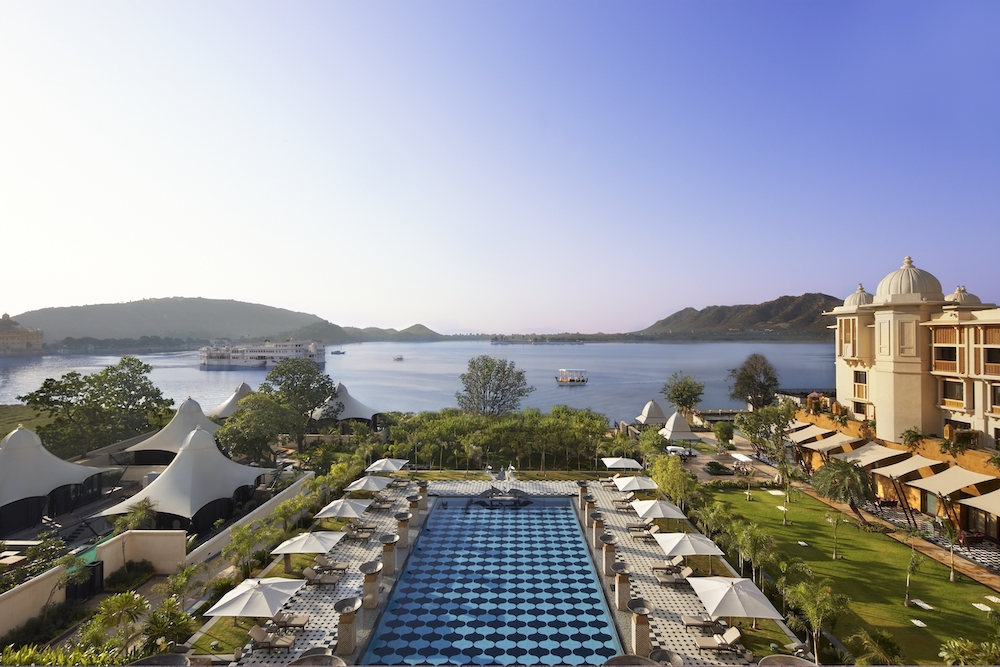
The Leela Palace Udaipur sits right on Lake Pichola. Photo: The Leela Group
Best-value splurge hotels
With construction steeped in Indian architectural style and competitive rates at most properties, the Leela Group of hotels is challenging historic subcontinent mainstays Taj and Oberoi. The Leela Palace Udaipur, for instance, is built right on the shore of Lake Pichola, in the over-the-top style of latter-day maharajas. At this hotel and the Leela Palace New Delhi, the entry-level rooms are the best value.
Dishes to try
India is largely a land of vegetarians, so forget about your favorite butter chicken or lamb vindaloo. Vegetables there are cooked in so many different ways that you can have the same one on consecutive days and every dish will taste vastly different. Take, for example, bhindi (okra): There is sukhi bhindi (dry stuffed okra), bhindi piazza (stir-fried with onions and tomatoes), traditional bhindi curry (okra in gravy), baison bhindi (coated with chickpea flour and stir-fried) and bhuna bhindi (lightly roasted), to name just a few cooking styles.
If you want to try several local specialties at once, order a “thali,” a full meal consisting of seven to ten small samples of different dishes, served with rice and roti or naan (a local flatbread).
A few good regional options:
Sarson da Saag is a Punjabi favorite—finely chopped baby mustard leaves cooked with onions, ginger, and a host of other spices. Best eaten with makki ki roti, a cornmeal flatbread.
Aloo Gobi’s bright flavor comes from a mix of spices, including turmeric and cumin, that season the dish’s potatoes and cauliflower.
Bhaingan Bharta is a smoky mashed eggplant dish cooked with onions, tomatoes, and spices. Enjoy this savory dish with roti or naan.
A popular street food from Mumbai, Pav Bhaji is a spicy mashed vegetable curry served on soft buttered bread rolls (pav).
Methi Thepla is a Gujarati flatbread make with whole wheat flour and fenugreek (methi) leaves, seasoned with spices. Enjoy it with yogurt or pickles.
You can find biryani all over India, but if you haven’t had Hyderbadi biryani, then you haven’t had biryani. Meats are marinated and tenderized in yogurt and spices for a day or more before being cooked with rice. A perfectly cooked biryani will have fluffy, flavorful rice with tender chunks of meat or chicken.
Galawati Kebab was traditionally made of minced mutton, though now one can find chicken preparations that are just as good, marinated in yogurt for that smooth texture.
Lentils are, of course, the quintessential item on any Indian menu, but in Udaipur they make dal with a mix of four or more lentils, giving it a distinctive texture and taste.
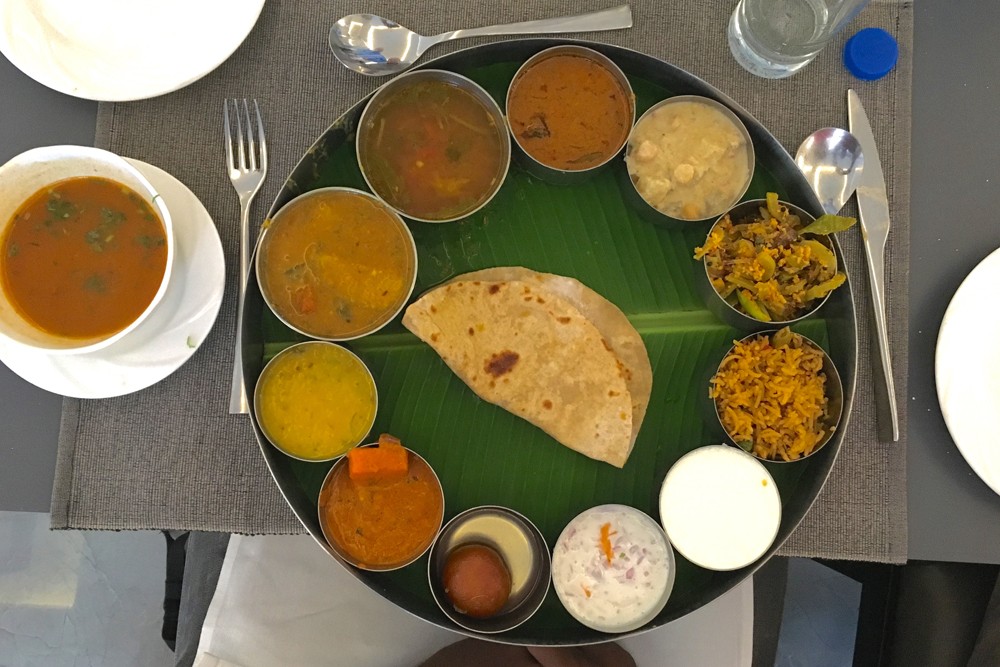
Order a thali and you’ll get to sample several local specialties. Photo: Sanjay Saxena
Meals worth the splurge
For a remarkable dining experience, look no further than Dum Pukt at Delhi’s ITC Maurya Hotel. Known for its exquisite Awadhi cuisine, Dum Pukt takes you on a culinary journey that honors the time-honored method of slow cooking, or “dum.” The dishes are cooked in sealed pots, allowing the ingredients to slowly simmer in their own juices, resulting in deep flavors and tender textures. Signature dishes include melt-in-your-mouth kebabs and biryani, where basmati rice is layered with marinated meats and spices. The ambiance at Dum Pukt reflects the regal heritage of Awadh and is perfect for celebratory meals.
Ziya, in the Oberoi Mumbai, is a modern Indian restaurant recognized for its innovative approach to classic Indian dishes. Michelin-starred chef Vineet Bhatia deconstructs and reinvents traditional Indian favorites using contemporary techniques and presentations.
Best Times to Go
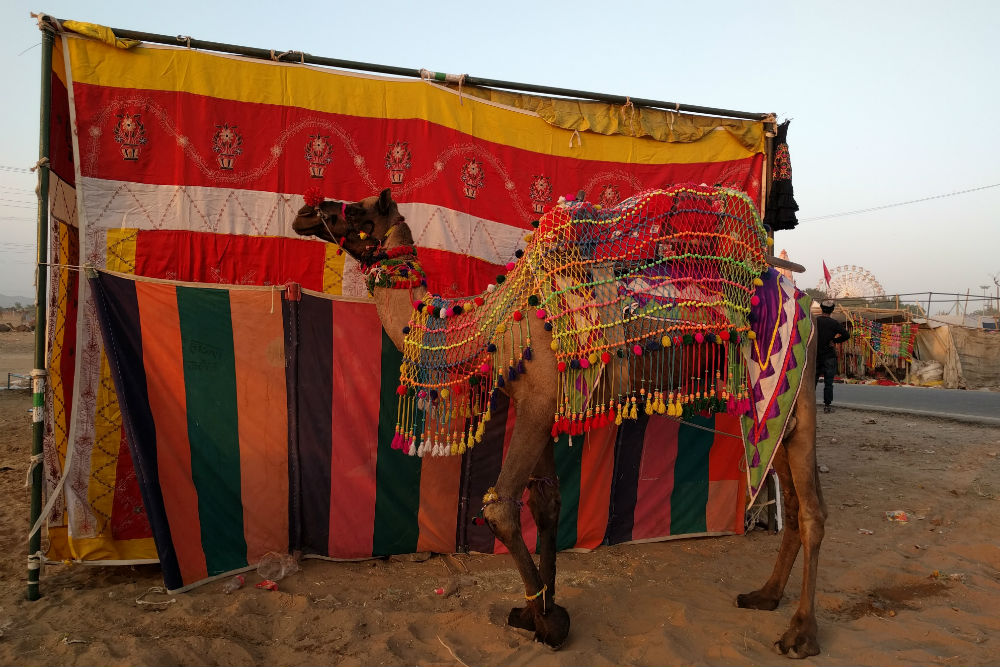
India stretches all the way from just above the equator to 40° North latitude, which means there is a part of the country with a pleasant climate during every month of the year:
November through February is a good time for all of South India, Central India, and most of North India, except for the Himalaya Mountain states. The weather is generally mild and comfortable.
March through June are some of the hotter months in the central plains—which run from the Himalayas in the north to the hill country in the south—but it’s the best time for visiting the wildlife parks, especially the tiger reserves. Spring is also an excellent time for hikers, as many Himalayan trekking routes are open and the mountains (up to about 14,000 feet) are covered with rhododendron blooms and other wildflowers.
While June through August is the monsoon season for most of India, it is also the best time to appreciate the unique landscape ofLadakh, which lies in the rain shadow of the great Himalaya and thus stays relatively dry.
September and October are prime for trekking, with clear skies and fall color in the Himalaya. This is also when a number of important festivals take place in North India, including the Pushkar Camel Fair, Diwali, Dussera, and Durga Puja.
Worst Time to Go
May through August: For a lot of people, the heat and the humidity brought about by the monsoon rains are too much to bear.
When to Book
India is renowned for its extravagant weddings, characterized by multi-day celebrations. These events can impact foreigners’ plans, as popular destinations will sell out well in advance due to high demand for venues and accommodations. Rajasthan and Goa have become increasingly popular as wedding destinations. If you’re traveling during the auspicious wedding season, it’s critical to book months in advance to ensure your choice of accommodation. While these dates are based on the Hindu lunar calendar and, hence change every year, they generally fall between October and January.
Biggest Rookie Mistakes
Underestimating travel times. Many travelers underestimate the impact of traffic. Major cities often experience heavy congestion, which can dramatically extend travel times. Factor in the the delays and plan ahead.
Ignoring local customs. Dress modestly and adhere to cultural norms; you’ll not only enhance your experience, you’ll also build positive connections with the communities you visit.
Not bargaining. Bargaining is standard practice in India and can be enjoyable and engaging. Embrace the opportunity to haggle; you’ll save some cash and go home with stories to tell!
Overlooking festivals and holidays. Failing to research these celebrations can lead to unexpected closures or crowded attractions. BUT, participating in local festivities can transform your experience of India, offering you unique insights into the culture and traditions of the area.
Instagram Moments
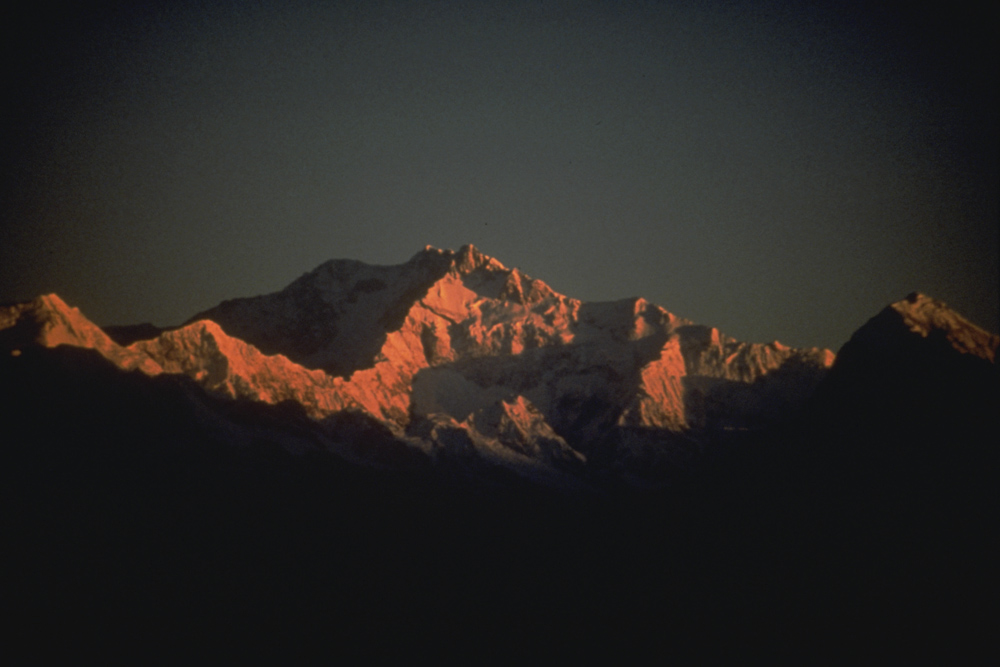
For breathtaking views of the Himalaya without having to hike, head to Darjeeling or Mussorie. The peaks are often visible at sunrise, though over the course of the day the snow evaporates and forms clouds that generally obscure the summits by sunset.
Everyone goes to the Taj Mahal at sunset; few know to enjoy the better view from the Mehtab Bagh, across the Yamuna River. From here, since you’re facing west, you can capture the Taj and the setting sun in the same photo.
Kerala’s natural beauty makes it easy to get a great shot while cruising on a houseboat. A far cry from the busy cities of the subcontinent, here you’ll find only coconut palms silhouetted against the red sky of sunset.
Wildlife enthusiasts will celebrate the opportunity to spot (and snap) tigers in their natural habitat, such as Kanha and Bandavgargh national parks in Madhya Pradesh. With lush forests and diverse ecosystems, these parks are home to a significant population of Bengal tigers. Mind you, the parks are large and the tigers are elusive, so it’s important to plan your visit for the right season. Nonetheless, what’s a shot worth if its too easy to get?
Scams to Avoid
If you’d like to take a picture of a villager or tribal member (even one in a city or at a pilgrimage site), have your guide speak to them first to confirm that this is okay and perhaps establish a fee. It has happened more than once, all over the country, that an individual will smile and pose for a photo, then demand a lot of money in return—even getting aggressive if their demands aren’t met.
Watch for overcharging in tourist markets. In tourist hotspots, vendors often inflate prices. Always negotiate—it’s expected and common practice.
Beware of fake tour guides. Some individuals may pose as official tour guides, charging travelers for services that they don’t provide. Always book guides through reputable agencies or your hotel.
Use caution with taxis. Use only registered taxis or reliable rideshare apps. Always agree on a fare before starting your journey or ensure the meter is in use.
Must-Have Apps
City Maps and Walks has a number of India cities in its portfolio. Some of the better self-guided walks are for Agra, Jaipur, and Mumbai.
WhatsApp is perfect for staying in touch with friends and family or communicating with local contacts without incurring international texting fees.
Airport Intel
India boasts 137 operational airports connecting major cities to more remote regions of the country. Keep in mind that airports can be quite crowded, so allow extra time for check-in and security procedures.
While digital boarding passes are now accepted in all major airports across India, Sanjay still recommends carrying a hard copy in case there are Wifi issues or your phone dies. Also many regional airports still insist on seeing a paper ticket.
Railway Intel
Traveling by train is one of the most scenic and economical ways to explore India. The Indian Railways, with its extensive network, makes it easy to traverse the country. Over the years railway infrastructure has significantly improved, enhancing both safety and comfort.
India’s luxury trains offer luxurious amenities and gourmet dining. One of the most popular, the “Palace on Wheels,” traverses Rajasthan. The “Maharaja’s Express” covers the Gold Triangle (Delhi/Agra/Jaipur) and beyond. The “Deccan Odyssey” showcases Maharashtra’s beauty, while the “Golden Chariot” goes on to Karnataka and Goa. A journey aboard one of these trains will ensure a seamless touring experience with all-inclusive services, luxurious style, and utmost comfort—all while unpacking just once!
Tipping Tip
In restaurants, a 10% tip is fine, 15% is considered generous. Hotel porters should be given $1 per bag; metered taxi drivers do not expect a tip, so 5 to 10% will be appreciated.
Don't Forget to Pack
Sunscreen is surprisingly hard to find in India. Also bring some slippers or airplane socks for visiting religious shrines, where shoes are not allowed. A reusable water bottle will allow you to stay hydrated—and environmentally friendly. And, of course, don’t forget your power adaptors!


